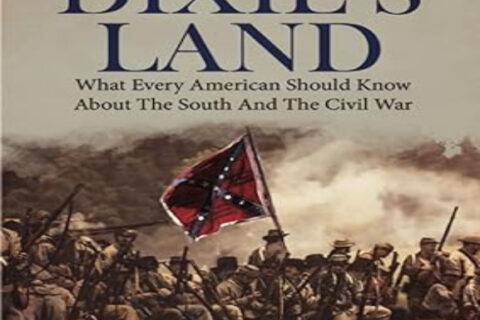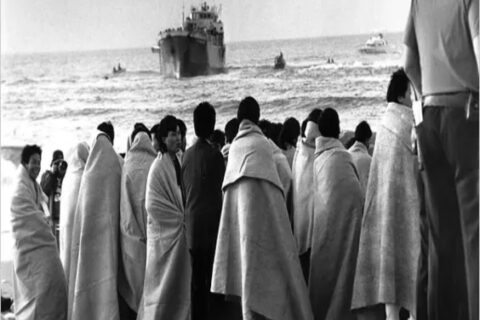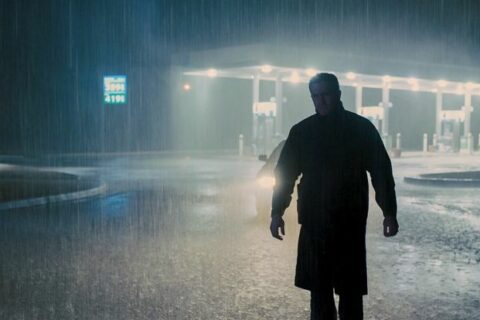Disclaimer: It has never been “my thing” to write Book or Movie reviews, nor am I especially inclined to make a habit of doing so now. This, because I doubt I’d be very good at it in the first place, as you may well soon discover; and in the second, it ain’t really my ‘cup of tea,’ even if I thought I might be good at it. However, I’ve decided to make an exception to my own rule in this particular case, trusting that you, dear reader, will embrace the spirit in which the following is written, while mostly overlooking my notable shortcomings as a book/movie reviewer.
In connection with our family’s interest in the life and extraordinary achievements of Matthew Fontaine Maury, the riveting story of the inventor of the Marine Chronometer – Englishman, John Harrison – occasionally comes up. For those of you unfamiliar with, yet interested in learning about, this amazing man and his amazing story, might I recommend two resources for your perusal: Longitude – the book, and the 2000 A&E Docu-drama by the same title. I offer my best Siskel & Ebert impression and give both treatments a hardy “two thumbs-up!” Or, if you prefer the Star Rating System, I give the movie five stars, and the book on which it is based, four. For my part, this is one of those rare occasions in which the film is better than the book on which it is based, no disrespect intended to the book’s author. I’ll devote at least some space below to explaining why I think the movie to be more interesting and informative than the book, while avoiding the need, I hope, of adding in a “spoiler alert.”
Longitude (the movie) is an award-winning Docu-Drama (Best Actor, Best Drama, among others), based on Longitude (the book) by Dava Sobel. The movie is directed by a man named Charles Sturridge. Filmed on location in England, the movie stars Jeremy Irons – who plays the role of 20th century British Naval Commander, Rupert Gould; and Michael Gambon – who plays the role of 18th century master carpenter and clock-maker, John Harrison. Both actors are outstanding in their performances in the eyes of yours truly.
Whereas the book focuses almost entirely on Mr. Harrison and his personal struggle to solve the longitude problem, the film depiction is a masterfully done parallel story of the two men (Harrison and Gould) and of each man’s decades-long struggle related to the creation (Harrison) and restoration (Commander Gould) of Harrison’s mechanical masterpieces – his Marine Clocks Commander Gould would eventually come to label H-1, H-2, H-3, and H-4 respectively; the “H” for Harrison, of course; the numbers for the order in which each of his marine clocks was made. The movie was originally made as a TV mini-series, and is divided into two more or less equal parts of just over an hour-and-a-half length each. During the entire course of which the viewer is frequently taken forward and back in time, from Harrison’s own era in the 18th Century, to that of Commander Gould around the WWI-WWII era of the 20th. And this is what sets the movie apart from the book; in contemplating how to go about telling this story cinematically, Sturridge eventually came to realize that interlacing Harrison’s own struggle with that of the man responsible for restoring his masterpieces to their proper condition two-hundred years later, would be the most effective way to do it.

Development of the Marine Chronometer is among the most significant achievements for the advancement of maritime navigation the world has ever seen. Prior to, and during the entire time Mr. Harrison worked on the solution to the longitude problem (roughly 40 years of his life, give or take), ships that took to the open seas were, quite literally, “groping in the dark” to find their true longitude at any given (easterly or westerly) point along their voyages. As such, history is replete with maritime disasters in which many many ships, their entire cargoes and crews, were destroyed at sea.
This is to say nothing of the countless lives lost on the open seas to disease, for lack of fresh water and other provisions necessary to sustain life and good health. That sailors of a bygone era were apt to see apparitions of ol’ Davy Jones perched atop the masts of their vessels warning them of their imminent doom, should come as no surprise when we consider that they so often suffered from the effects of scurvy and other terrible illnesses, brought about by lack of proper nutrients in their diets, as a result of being completely lost at sea for weeks on end.
The life of seamen for centuries was, in the truest sense of the term we moderns can barely appreciate, extremely hazardous duty. Harrison made it his life’s work to solve this difficult problem, and ultimately did so with his invention of the Chronometer; a long and arduous process that involved several phases of development before he finally, and against all odds leveled against him, brought his invention to a degree of perfection to make it practicably useful for finding longitude at sea. The movie tells Harrison’s story in this pursuit very effectively and very well.
Two centuries later, Commander Gould would appear on history’s stage. Having studied the history of the marine chronometer and its creator with intense interest, Commander Gould would become deeply concerned, to the point of obsession, that the elements and human neglect would combine to destroy, beyond any hope of repair, Harrison’s masterpieces. In his own intrepid and indefatigable pursuit to locate their whereabouts and to restore them to their proper condition and working order for posterity’s sake, Commander Gould would become intimately connected to these intricate machines, as though they had been creatures of his own making, at every stage of their development, and in every detail. That parallel story is told with great effectiveness in the movie as well.
I first saw this movie on A&E sometime in the early 2000s. I later procured a DVD copy that I have probably watched more than a couple dozen times during the interim between then and now. To be perfectly honest, I do not recall when exactly I read the book. It was some short time after I’d first seen the movie, when our eldest son picked up a copy at a used book store and loaned it to me to read. The book is only a couple hundred pages (if that), if memory serves, and therefore a short read, certainly worth the investment of time it will take you to get through its pages.
The movie comes even more highly recommended from yours truly, as I trust is readily apparent in the paragraphs above. If you have never seen this move, you have been missing out on a great cinematic production. If needs be, find it on YouTube and watch it there, where it has been uploaded as a full movie, as well as in 21 shorter (15 minute long) parts. It is free to YouTube Premium subscribers, at least for the time being. Finally, this is a great movie to sit down and watch with the kiddos. Happy viewing! And in the words of one of my younger brothers, you can thank me later.







Mr. Morris do you have a website of your own? Just wondering, we need to start codifying our understanding. Books, movies, history, music and much more are completely controlled by people who hate us and sometimes I find myself floundering for references, essays, things like your articles here for example. It seems like a cheap and easy solution would be for people to start have their own personal web sites. That way we can all keep in touch and post things that we have collected along the way, our insights, history that the marxists are not writing down, your movie recommendations even.
We can maybe one day begin to coalesce our collective understanding by using the commonality we share, much as the fake historians use journals now, which can only be spun so much, I fear the fact that none us keep journals will mean the breaking of our collective understanding, it will be lost along with our history they burn and rewrite. So if you have one please share the link, if not maybe get one, I understand they are cheap and could serve as a repository for your personal collection of things, and as I said, we can start to share with one another, have common places where information is stored, a place to send people for a reference instead of ten different sites, we can start to say, just go to my page, I wrote an essay on that awhile back, I also have some good movies, good books, good music, even effective arguments in debates I’ve have had, all from the Southern perspective of course.
In this time, it is so hard for us to find things that are not utter cancer and lies. If its centralized it is inevitably either subverted, outright destroyed or becomes so ponderously large that it loses its functionality and effectiveness by trying to.do too much. Consequently it also loses its purity and is more easily corrupted.
By distributing it across vast “nodes” so to speak it gives us a level of resilience that is hard to match. That is the basic way things like the Deep Web remain intact despite governmental attempts to take it down. By each of us having our own “node” in a network, that being a personal site, not only can we preserve things that are currently being lost because none of us really keep a journal as our forebarers did, it will add a resilience to our history and collective understanding that is hard to match.
For example, I have my personal site where I keep things I have written, my insights, good debates I’ve won on various subjects, my taste in things, all through the years even Southern slang and terminology, anything and everything that has to do with my worldview and journey as a Southerner, a repository that can be easily catorgized, cataloged and searched with no effort or expertise needed, the miracle of modern technology. Now I have a place to pull those things up or link to instead of sending people to ten different sites on a wild goose chase looking for comments that I have forgotten I’ve ever written on sites that no longer exist. I have my own node, you have yours and so on and so forth down the line across severs at home (a simple site can be ran from your PC, but its not necessary) backed up to severs on different providers in different countthoughrchived and stored. Nodes scattered at home and across the world, pools of wisdom and understanding of our people to use and reference and if we live, history to be written. It can even provide a way to communicate with the author though a direct message or email, a simple function to add to a site.
Resilient, hard to erase, not monolithic. Sherman burning the record storehouses would have been a lot harder if everyone had a piece of the records at home too. These this will become more important in the days to come I fear.
There is also opportunity for us to make profit, which I and I’m sure other impoverished Southerners to make money, which we can then use to help other Southerners make money, a built in network that we sorely need, we have to unite the tribes and we have to make money, we must look for opportunities to do so, this idea could be one, but that’s a whole other post and my tendency for long comments is setting I’m, so I will force myself to stop here.
One last thing though, in relation to our previous conversations. Look what I’ve found! Finally after me spending countless hours on every Southern page, site and comment section for years now, harassing, shaming, prodding and down right bullying people about a Southern curriculum, no matter what subject was being discussed, it seems someone got mad enough at me to shut me up, thank the Lord! I once again implore you to reach out to these people and begin to, dare I say, network with them. Here is a foundation, but a foundation is not a house. I thought you might like to see this and maybe give them a call, see what’s shaking. If I had a website this day would be marked on the calendar for me, this is more important than I think people realize. Cheers!
https://scv.org/curriculum/?fbclid=IwAR0xFjlYwVpHCtajK0PAsgZOiWzE0f-O3HHmwYvLaO7fQ_mVw-SfvgWmNIU
For anyone wondering, over at GAB, which if you are a Christian is THE only social site you should be supporting. The owner is a real Christian, not the Boomer give your money to Jews and open your borders kind there is a movement being spearheaded by the CEO to make a purely Christian economy. This is the part that is trying to take the money from the Hollywood pedofile Jews and Communists and make them obsolete, check it out.
https://gab.com/watchLOOR/posts/105775882285532621